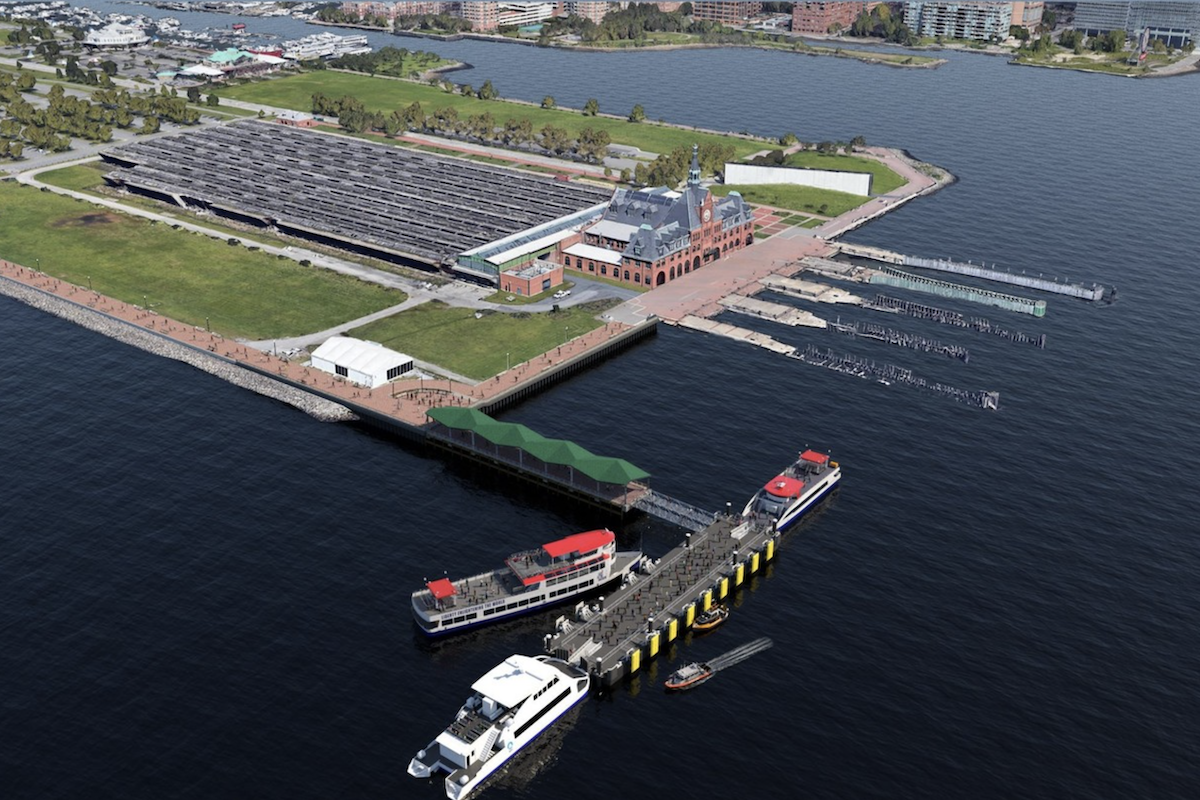“The First Coast Expressway has already helped to boost economic growth in the region, with new facilities and thousands of new jobs added by employers like Amazon, Northrop Grumman, Bridgestone Americas Tire Operations, Boeing, and Flightstar Aircraft Services, just to name a few,” says Sara Pleasants, Community Outreach Specialist for FDOT. “Once completed, the new St. Johns River Bridge, with its 65-foot vertical clearance, will also open up new opportunities for marine commerce, particularly for the Port of Palatka.”
Northeast Florida is one of the fastest-growing areas in the United States. About 1 million people lived in Duval County in 2022, up from 864,263 in 2010, according to the U.S. Census. Clay County increased to 226,589 in 2022, a jump from 190,865 in 2010, and 306,841 people lived in St. Johns County in 2022 up from 190,039 in 2010.
“The First Coast Expressway also provides a critical hurricane evacuation route for the region, providing an alternate corridor for residents heading inland during the severe storms that have become an annual occurrence in our state,” Pleasants says.
The new 46-mile limited-access expressway features all-electronic tolling, with no stopping. When completed, it will connect Interstate 10 and Interstate 95. FDOT finished the first 15-mile segment, with three contracts, in 2019 and began tolling.

| Your local Trimble Construction Division dealer |
|---|
| SITECH Allegheny |
| SITECH Northeast |
Federal dollars, FDOT, and Florida’s Turnpike Enterprise have funded the projects. RS&H of Jacksonville, as owner’s representative, did the corridor layout and designed several segments of the expressway.
The corridor was designed with endangered species in mind, and before construction, FDOT relocated gopher tortoises. None were encountered during construction.
“Impacts to wetlands were mitigated in design and all wetlands outside of project limits were protected with erosion control measures during construction,” Pleasants reports. “The ammunition berm was removed without incident and the lead encountered was disposed of by the FDOT contamination contractor.”
FDOT divided the 20-mile Segment Two into North and South projects, with both projects starting in 2019 and expected to be complete in 2025. Additionally, the new St. Johns River Bridge is now under construction as part of a design-build contract, with completion estimated in 2030. The final segment, from the St. Johns River to I-95 in St. Johns County, remains in the design phase. FDOT is still determining bidding and construction scheduling with a target of completion for the entire corridor in 2030.
“The work on the north First Coast Expressway project has accelerated since June of 2021, with numerous bridges, MSE (mechanically stabilized earth) walls and roadway work being completed,” Pleasants says.
Crews have completed 19 bridges, are finalizing three with decks, and four are in the early stages of foundation and substructure work. The bridges have concrete Florida I Beams provided by CDS manufacturing in Gretna, Florida. Most of the piles are 24-inch square with a few 18-inch piles.
“Pile driving has varied throughout the project with conditions in sandy soils, clay soils, and some very hard limestone layers,” Pleasants says. “The contractor has risen to the challenge in all cases and provided the necessary experience and equipment to provide solid foundations.”
Sacyr completed the five cast-in-place box culverts early in the project, using a diversion ditch to construct the culverts in the dry for environmental compliance. Signs, lighting, and signalization are ongoing.
“Twenty-five of 26 MSE walls are nearly complete, and the roadway construction group has placed nearly 80,000 tons of asphalt,” Pleasants says. “Two diverging diamond interchanges are well under way. Work on this segment is approximately 76 percent completed with 70 percent contract time used.”
The project is scheduled for completion in 2025.
“The contractor utilized GPS automated machine guidance to assist with the construction of the embankment, and the project served as a 3D plan pilot for the inspection staff,” Pleasants says. “The contractor and inspection staff utilized drones on a biweekly basis since the project began.”
Superior has completed about 88 percent of the project with 73 percent contract time used, Pleasants says. It is scheduled for completion in 2025.
“Design work on the new bridge over the St. Johns River continues,” Pleasants says. “Geotechnical exploration is nearly complete and the 60 percent bridge design has been submitted for initial modeling to the FDOT’s independent design reviewer.”
The new bridge will have two 12-foot-wide travel lanes in each direction, 12-foot-wide outside shoulders, and a 12-foot shared-use path on the northbound side of the bridge to accommodate pedestrians and bicyclists.
“The new bridge will be founded on 60-inch cylinder pile bents as well as 30-inch concrete square piles,” Pleasants says. “The cylinder piles will be used to construct the approach bents to the channel spans, while the square piles support waterline footer and pier substructure for the navigational channel spans and its high-level approaches.”
Florida I Beams will support the superstructure. The three continuous channel spans will use 96-inch girders made continuous for live-load through thickened end diaphragms. The joint venture team plans to construct the signature bridge by trestle bridge and barge.
“Once the new bridge is complete, most of the old bridge will be demolished, but a small section on both sides will be transformed into public fishing piers, with adjacent recreational areas that include parking, lighting, sidewalks, and pedestrian improvements,” Pleasants reports. “FDOT has established agreements with both Clay and St. Johns counties to maintain these new recreational facilities once they are complete.”
FDOT expects the new bridge to finish in 2030.
“These projects will provide significant benefits to all of its constituencies, including enhanced safety, reduced congestion and more predictable commute times; infrastructure to support continued economic growth; new recreational opportunities; and additional options for evacuation during hurricanes and other emergencies,” Pleasants concludes. “The First Coast Expressway is a win for the entire region, and we look forward to seeing the full project come to fruition.”
Photos courtesy of the Florida Department of Transportation







































































